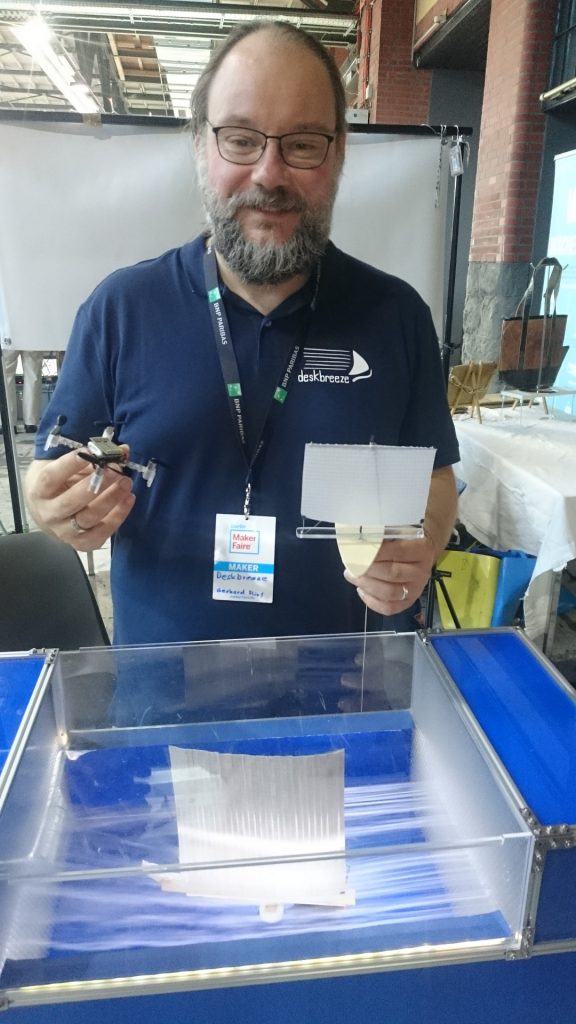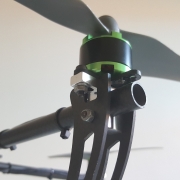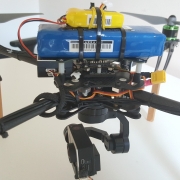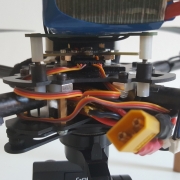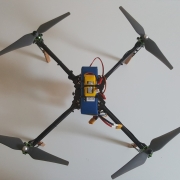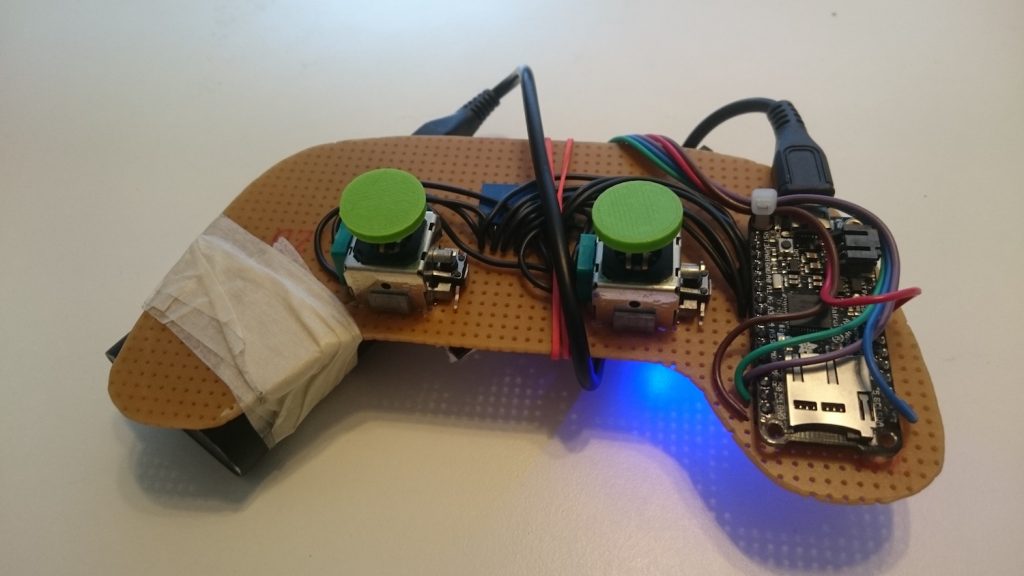One week ago we where presenting Crazyflie 2.0 and the Loco Positioning System at Maker Faire Berlin 2016. It was a lot of fun being there, we enjoyed it very much, and it also required a couple of weeks of preparation. The preparation was both mechanical and markerting: out booth was built with and outdoor tent frame and we featured the first roll-ups of Bitcraze history (almost felt a bit too ‘corporate’ for us :-).
On the technical side it was an opportunity to test Crazyflie and the Loco Positioning System in real event situation. This required stabilizing the system and testing it so that no bad surprises would happen during the faire. The result is pretty good: we flew more than 91% of the opening time, we had 2 fly-away the first day, fixed the problem and had none the second day. We were flying with 2 Crazyflie sequentially and had not broken any motor mount or other part during opening hours (some crazyness did happen after-hours though, maybe more on that on a later post ;-).
For our demo the Crazyflie was flying autonomously with the loco positioning system using the Kalman filter to fly towards a given x/y/z set-point. We made a midi-to-crazyflie bridge in ROS that allowed to give control of the Crazyflie position via a midi cable. We actually used a physical midi cable which was the safest and simplest. On the other side of the midi cable was a computer running a midi sequencer, lmms. Part of the sequence was playing actual music to make the Crazyflie dance and part was just silent movement. The setup looked like that:
Midi can encode notes pitch (ie. where in the piano you play) and velocity (ie. how hard you press the piano key). The midi track contained 4 tracks: X, Y, Z and LED-ring. In X, Y, Z tracks the note pitch converted into a position and we don’t use the velocity. The led ring track maps the note pitch to a color and the velocity to a brightness. It looks like that:
This setup was a bit of a test, we found it to be very reliable. Some functionality were implemented on-site after Friday morning experience: automatic landing when the battery was low and reconnect on take-off to allow taking off without restarting anything in the PC just at a press of a button. The midi link worked well even though it feels a bit hackish to setup a choreography like that. If you have any better idea what to use to make a Crazyflie dance please tell us!
Last but not the least we have share all the codes, files and documentation for this demo on github so that you can run it yourself with an loco positioning system. We also made a short video showing the demo in action:


